We need your consent to use the individual data so that you can see information about your interests, among other things. Click "OK" to give your consent.
ASTM D5613-94(2014)
Standard Test Method for Open-Channel Measurement of Time of Travel Using Dye Tracers (Withdrawn 2023)
Automatically translated name:
Standard Test Method for Open-Channel Measurement of Time of Travel Using Dye Tracers
STANDARD published on 1.1.2014
The information about the standard:
Designation standards: ASTM D5613-94(2014)
Note: WITHDRAWN
Publication date standards: 1.1.2014
SKU: NS-31886
The number of pages: 20
Approximate weight : 60 g (0.13 lbs)
Country: American technical standard
Category: Technical standards ASTM
The category - similar standards:
Annotation of standard text ASTM D5613-94(2014) :
Keywords:
dispersion, fluorometry, mixing, surface water, time-of-travel, tracers, ICS Number Code 17.120.20 (Flow in open channels)
Additional information
| Significance and Use | ||||||||||||
|
5.1 Purpose: 5.1.1 This test method covers the use of fluorescent dye tracers in streams to determine the rate that a solute moves along a streamline for a given river reach and the rate at which a solute disperses as it moves downstream. 5.1.2 Accurate measurements of a stream's velocity and dispersion coefficient that can be determined by a tracer study are important parameters for water-quality models. 5.1.3 Determined in advance to potential spilled or released noxious substances, velocity and dispersion rates are used to predict the time of arrival, passage time, and maximum concentration. Public health officials need this information to decide whether, when, and how long to suspend operations of public water-supply intakes in the reach downstream of a spill. 5.2 Assumptions: 5.2.1 This test method assumes that the dye tracer behaves in the same manner as the water in which it is injected. Dispersion and mixing of the tracer in the receiving river occur in all three dimensions of the channel. Longitudinal mixing is unending since boundaries do not exist in this direction. 5.2.2 The tracer response curve at a point downstream from the point of tracer injection can be represented by plotting the tracer concentration against elapsed time since the injection (5.2.3 A tracer response curve has four important characteristics: the elapsed time to the response curve's leading edge; elapsed time to the response curve's peak concentration; elapsed time to the response curve's centroid; and elapsed time to response curve trailing edge at 2 % of the peak concentration. 5.2.4 Between two monitoring locations separated by a long stream length, the time-of-travel for individual response curve characteristics is the difference in the elapsed times since injection for that characteristic at the two locations. 5.2.5 The duration or time of passage of a tracer response curve at a particular river location is the difference between the slowest trailing edge elapsed time since injection and the earliest leading edge elapsed time since injection determined in the cross section. 5.3 Tracers: 5.3.1 Conservative tracers used to investigate fluid motion are generally extrinsic, artificial, and chemical substances and are usually classified according to the methods of detection used and chemical composition. 5.3.2 Properties to be considered when selecting a tracer for a study include detectability, toxicity, solubility, cost, natural background concentration, and sorption characteristics. 5.3.3 Fluorescent dye tracers such as Rhodamine WT, pontacyl pink, and acid yellow 7 are generally good chemical tracers. Rhodamine WT has the most numerous qualities preferred by many state and federal agencies for open-channel studies. 5.3.4 Other tracers can be used when water-quality or physical conditions are not suitable for the use of fluorescent dyes in a proposed study reach. These include salt-based chemical tracers such as sodium chloride, radioactive tracers such as tritium, and tracers determined with neutron activation analysis such as bromine and lithium (3). 5.3.5 These tracers are considered to be generally conservative and, in terms of this test method, differ primarily in the apparatus required to measure the concentrations in the study reach. Discussions in subsequent sections will be limited to fluorescent dye because of the simplicity of fluorometric analysis. 5.3.6 Different tracers require varied levels of permits before being introduced into the environment. For example, radioactive tracers require permits from the Nuclear Regulatory Commission (NRC) and usually state and local permits. Fluorescent dye tracers do not usually require formal permits for use in a study. |
||||||||||||
| 1. Scope | ||||||||||||
|
1.1 This test method covers a means of measuring the time-of-travel of water and waterborne solutes by the use of dye tracers and tracing techniques. This test method is similar to methods developed by the U.S. Geological Survey and described in other referenced documents. 1.2 This test method describes the dye tracers, measuring equipment used, and field and laboratory procedures customarily used. 1.3 This test method describes the methods of tracer study analysis and data presentation. 1.4 The user of this test method should address the following concerns regarding the use of tracers in water bodies: 1.4.1 Determine whether the chemical has clearance or approval or has potential or preceived impacts relating to potable, industrial, irrigation, or fish and wildlife use. 1.4.2 Determine whether approvals are required by involved agencies. 1.4.3 Document contacts regarding notification. 1.5 The values stated in inch-pound units except for chemical concentrations and liquid volumes for step dilutions, which are stated in SI units, are to be regarded as the standard. 1.6 This standard does not
purport to address all of the safety concerns, if any, associated
with its use. It is the responsibility of the user of this standard
to establish appropriate safety and health practices and determine
the applicability of regulatory limitations prior to use.
ISO 555/2-1974 Liquid Flow Measurement in Open
Channels--Dilution Methods for Measurement of Steady Flow, Part 2:
Integration (Sudden Injection) Method. Standard Guide for Equipment for Sampling
Water and Steam in Closed Conduits (Withdrawn 2003) Standard Practice for Determination of
Precision and Bias of Applicable Test Methods of Committee D19 on
Water Standard Practices for Sampling Water
from Flowing Process Streams Standard Test Method for Open-Channel
Flow Measurement of Water by Velocity-Area Method Standard Guide for Sampling Fluvial
Sediment in Motion |
Similar standards:
Historical
1.1.2013
Historical
1.1.2013
Historical
1.1.2014
Historical
1.1.2014
Historical
1.1.2014
Historical
1.1.2014
We recommend:
Technical standards updating
Do you want to make sure you use only the valid technical standards?
We can offer you a solution which will provide you a monthly overview concerning the updating of standards which you use.
Would you like to know more? Look at this page.


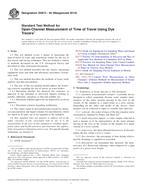
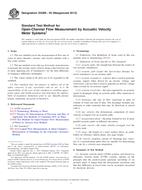 ASTM D5389-93(2013)..
ASTM D5389-93(2013)..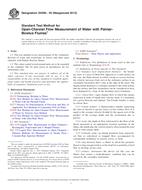 ASTM D5390-93(2013)..
ASTM D5390-93(2013)..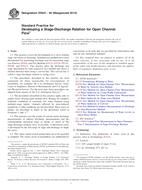 ASTM D5541-94(2014)..
ASTM D5541-94(2014)..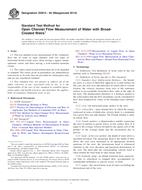 ASTM D5614-94(2014)..
ASTM D5614-94(2014)..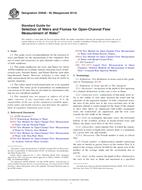 ASTM D5640-95(2014)..
ASTM D5640-95(2014)..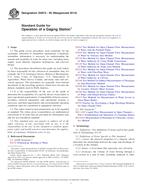 ASTM D5674-95(2014)..
ASTM D5674-95(2014)..
 Cookies
Cookies
